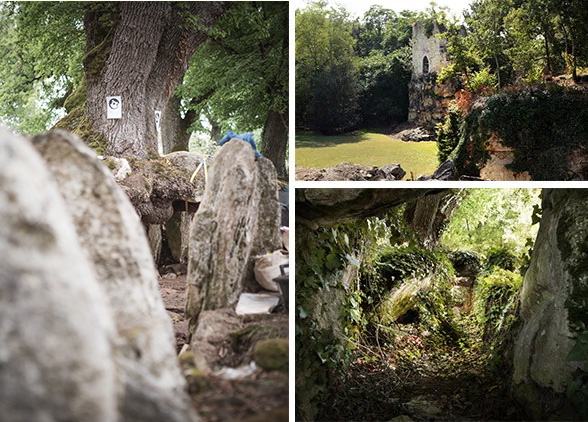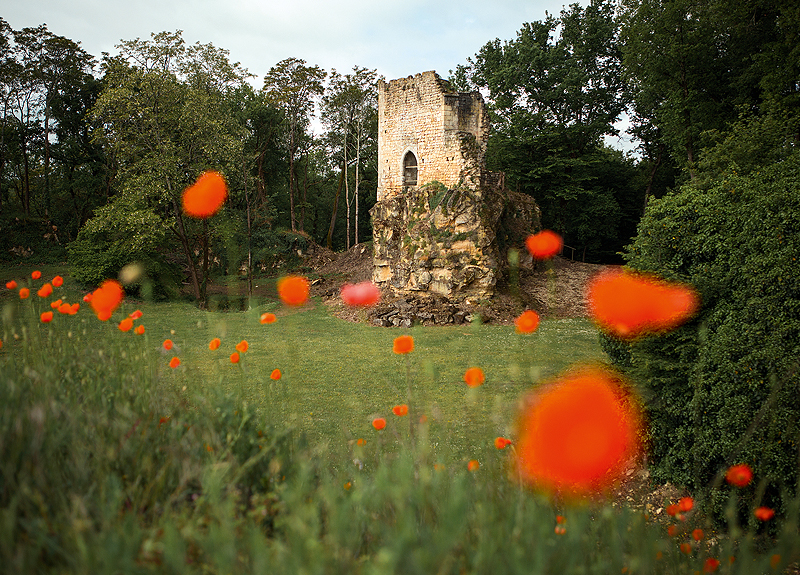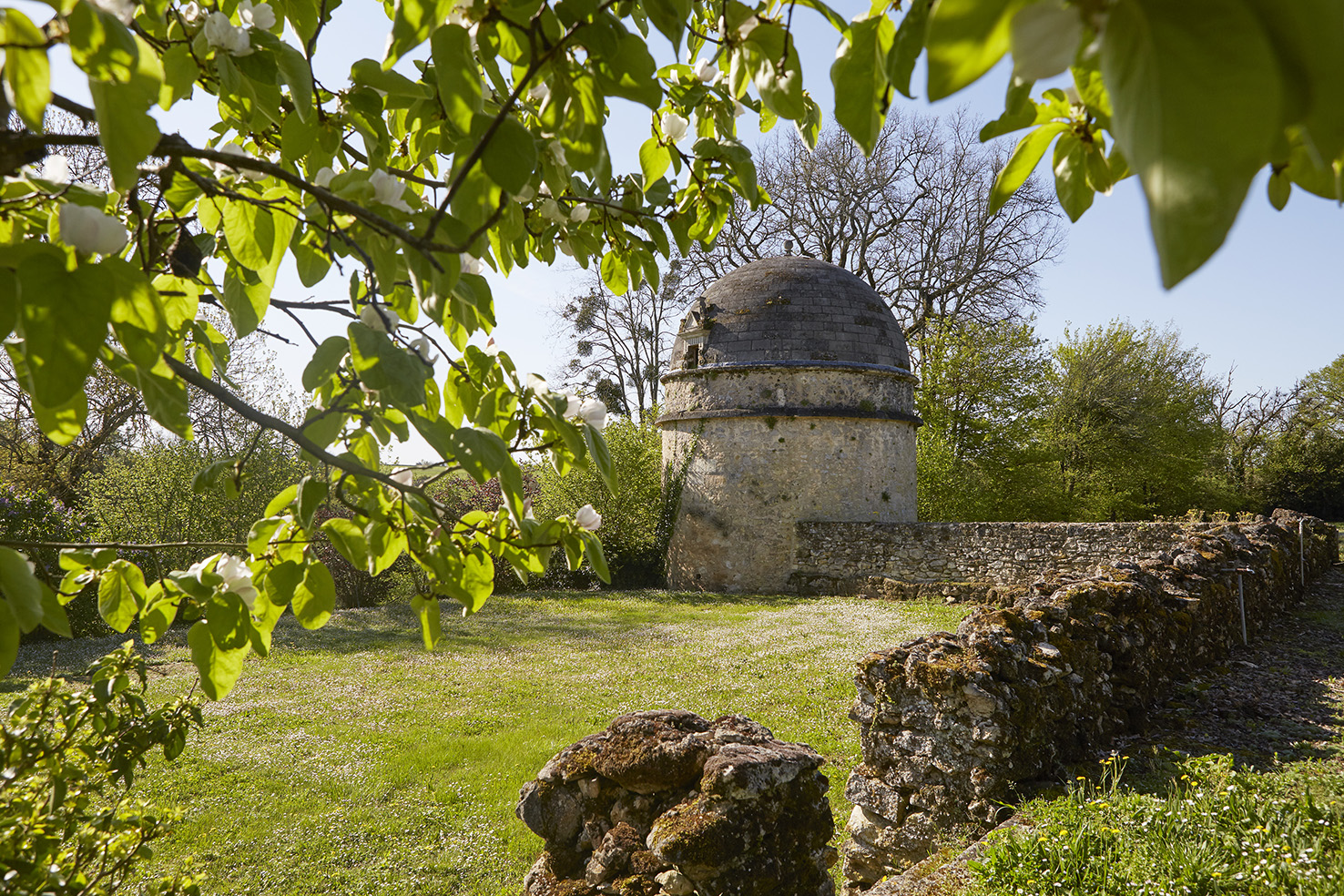

Château Roquefort is an estate steepedrooted in in history. The origins of the name Roquefort date make to the Middle Ages:
Roca Forte means a rocky outcrop. However, the history of Roquefort began more than 6000 years ago!

The archaeological site
In the Neolithic era, men and women settled on the Roquefort limestone plateau at the confluence of two small streams. This headland with its steep slopes and multiple water sources was a natural location easy to defend, with an unobstructed view of the surrounding hills. These populations settled down and made a living from animal husbandry and then agriculture. Bearing witness to this distant era, the estate is home to some exceptional remains: the very oldest pieces of pottery date back to 4500 BC and the covered walkway, in reality, a “dolmen” (a megalithic tomb) dates back to the middle Neolithic period 3700 BC. 14 meters long, this mass burial site is the longest in Europe. Excavations completed from 1865 onwards by the artist and archaeologist Léo Drouyn revealed items from the Bronze and Iron Ages as well as jewelery made from shells and bones, and even a Faustina coin from the Gallo-Roman era. Some of the anthropological materials are now on display at the Museum of Aquitaine and the Bordeaux Linnean Society Museum.
The Middle Ages
The oldest archive documents record the existence of the Roquefort house fortification in 1291 when King Edward I of England authorised Gaillard de Grésignac to rebuild it following the troubles of the 1250s. The fortress, consisting of a rectangular tower built over two levels, is the contemporary of Château de Rauzan and the Abbey of La Sauve-Majeure. The region would then be turned upside down by the Hundred Years’ War, but the Grésignac family kept the Roquefort chateau until the 15th century. In 1865, Léo Drouyn produced some magnificent etchings of the estate as it was in the 19th century. Today, only part of the original tower remains and has been restored by the Bellanger family.

18th century to present day
The chateau has evolved over the centuries and different buildings tell the story of this agricultural and winemaking region. The dovecote, typical of southwestern architecture, was built in the 18th century. The roof and machinery were renovated by the Compagnons du Devoir in 1997. Visitors can explore the home of these incredible pigeons which were used as messengers. It is surrounded by farm buildings which are currently being restored, including a bread oven and a dairy. The old vaulted stables have been transformed into a wine cellar. The current main residence is a beautiful chartreuse house dating from the 18th century, nestled on a rocky outcrop with magnificent views of the surrounding ‘little Tuscany’. In 1900, the archives record Mr. Pierre de Boussiers as the owner and operator, and Château Roquefort wine as some of the best Bordeaux from Entre-Deux-Mers. All of this magnificent heritage has been restored by the Bellanger family over the past 40 years, while respecting the authenticity and charm of the estate.
